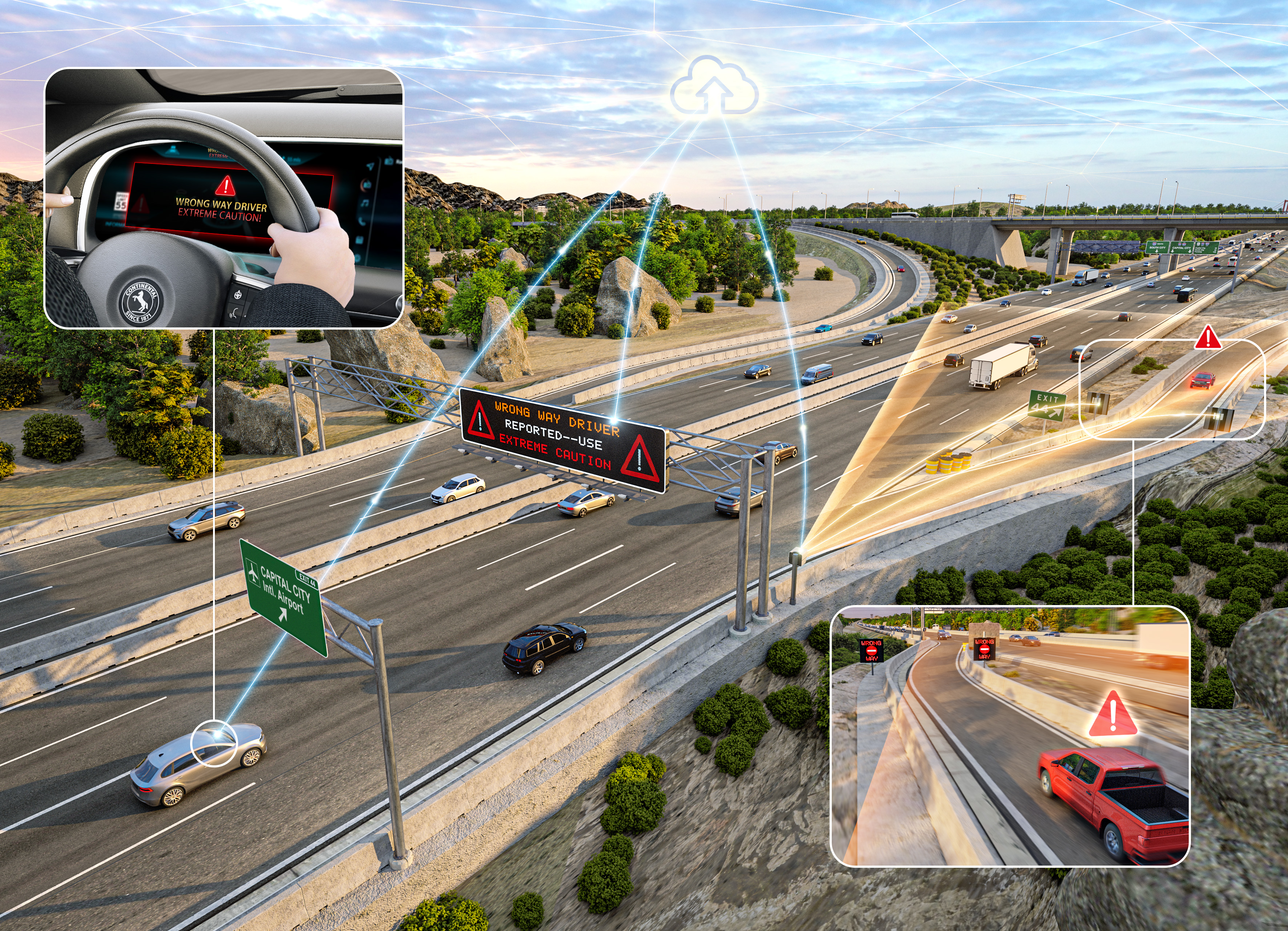Enhancing Road Safety with Govcomm's Wrong-Way Vehicle Detection System
The Wrong-Way Vehicle Detection System is a vital tool in the fight against road accidents, and Govcomm is leading the charge with its innovative approach.

In the realm of traffic management and road safety, technological advancements have played a pivotal role in reducing accidents and saving lives. One critical innovation in this space is the Wrong-Way Vehicle Detection System (WWVDS). Govcomm, a leader in intelligent transportation systems, is at the forefront of developing cutting-edge solutions that address the challenges posed by wrong-way driving incidents.
Understanding the Threat of Wrong-Way Driving
Wrong-way driving occurs when a vehicle travels against the intended flow of traffic, typically on highways or one-way streets. These incidents are particularly dangerous because they often result in high-speed head-on collisions, leading to severe injuries or fatalities. According to the National Transportation Safety Board (NTSB), wrong-way driving accidents are over 25 times more likely to result in fatal outcomes than other types of traffic incidents.
Factors contributing to wrong-way driving include:
-
Driver impairment (due to alcohol or drugs)
-
Poor visibility or signage
-
Distracted driving
-
Mental health issues or confusion
With the increasing number of vehicles on the road, the risk of such incidents is significant, making it imperative to implement robust detection and prevention systems.
What is a Wrong-Way Vehicle Detection System?
A Wrong-Way Vehicle Detection System is an advanced technology designed to identify vehicles traveling in the wrong direction and alert authorities or the drivers themselves to prevent accidents. These systems utilize a combination of sensors, cameras, and software to provide real-time monitoring and rapid response capabilities.
Key features of WWVDS include:
-
Real-Time Detection: Identifying wrong-way vehicles within seconds of occurrence.
-
Automated Alerts: Sending notifications to traffic management centers, law enforcement, or directly to drivers.
-
Integration with Signage: Activating flashing warning signs or signals to alert the wrong-way driver.
-
Data Collection and Analysis: Logging incidents to provide insights for future preventive measures.
Govcomm’s Pioneering Role in Wrong-Way Detection
Govcomm’s Wrong-Way Vehicle Detection System is an industry-leading solution that incorporates state-of-the-art technology to address the menace of wrong-way driving. By leveraging decades of expertise in traffic management, Govcomm has developed a system that ensures accuracy, reliability, and rapid response.
Key Components of Govcomm’s WWVDS
-
High-Precision Sensors: Govcomm’s system utilizes radar and thermal sensors capable of detecting vehicles in adverse weather conditions and low-visibility environments. These sensors are strategically placed at highway ramps and critical junctions to maximize coverage.
-
AI-Powered Analytics: Artificial Intelligence (AI) enhances the system’s capability to differentiate between wrong-way drivers and false positives such as pedestrians or wildlife. This reduces unnecessary alerts and ensures that resources are deployed efficiently.
-
Dynamic Warning Systems: The system is integrated with dynamic LED signage and audible alarms that activate instantly when a wrong-way vehicle is detected. This immediate feedback can often prompt drivers to correct their course before an accident occurs.
-
Cloud-Based Monitoring: Govcomm’s WWVDS is supported by a cloud-based platform that enables traffic authorities to monitor incidents in real time. The platform provides a comprehensive dashboard with visual data, incident timelines, and response tracking.
How Govcomm’s System Works
-
Detection: Sensors installed at entry points detect the vehicle moving against traffic flow.
-
Verification: Cameras capture footage of the vehicle, and AI algorithms verify that the event qualifies as a wrong-way driving incident.
-
Alerting: The system triggers alerts via connected signage and sends notifications to traffic control centers and law enforcement.
-
Response: Authorities can use the system’s data to take immediate action, such as deploying patrol units or remotely controlling traffic signals to mitigate risks.
Benefits of Implementing WWVDS
1. Enhanced Road Safety
The primary benefit of Govcomm’s WWVDS is the significant reduction in wrong-way driving incidents. Early detection and timely alerts prevent potential collisions and save lives.
2. Cost Savings
By preventing accidents, the system reduces the economic burden on healthcare, emergency response, and vehicle repair services. It also minimizes traffic disruptions, which can have a substantial economic impact.
3. Data-Driven Improvements
The system’s ability to log and analyze incidents provides valuable insights for improving road design, signage placement, and driver education programs.
4. Public Confidence
A robust wrong-way detection system reassures the public that authorities are committed to ensuring their safety, fostering trust and compliance with traffic regulations.
Case Studies: Govcomm’s Impact
Florida’s Interstate Highways
Govcomm implemented its WWVDS across several highway ramps in Florida, a state notorious for wrong-way driving incidents. Within the first six months, the system successfully detected and mitigated over 50 potential collisions.
Urban Centers in California
In urban areas with high traffic density, Govcomm’s WWVDS integrated seamlessly with existing traffic management systems, reducing the response time for law enforcement and improving overall traffic flow.
Future of Wrong-Way Vehicle Detection
As technology continues to evolve, so does the potential for enhancing wrong-way detection systems. Govcomm is actively exploring innovations such as:
-
Vehicle-to-Infrastructure (V2I) Communication: Allowing vehicles to receive direct alerts about wrong-way driving situations.
-
Machine Learning Enhancements: Improving the system’s predictive capabilities to identify high-risk scenarios before they occur.
-
Integration with Autonomous Vehicles: Ensuring self-driving cars can respond to wrong-way drivers effectively.
Conclusion
The Wrong-Way Vehicle Detection System is a vital tool in the fight against road accidents, and Govcomm is leading the charge with its innovative approach. By combining advanced sensor technology, AI analytics, and real-time alerts, Govcomm’s WWVDS not only enhances road safety but also sets a benchmark for intelligent transportation solutions. As cities and states continue to adopt such systems, the dream of zero fatalities due to wrong-way driving moves closer to reality.
What's Your Reaction?

















